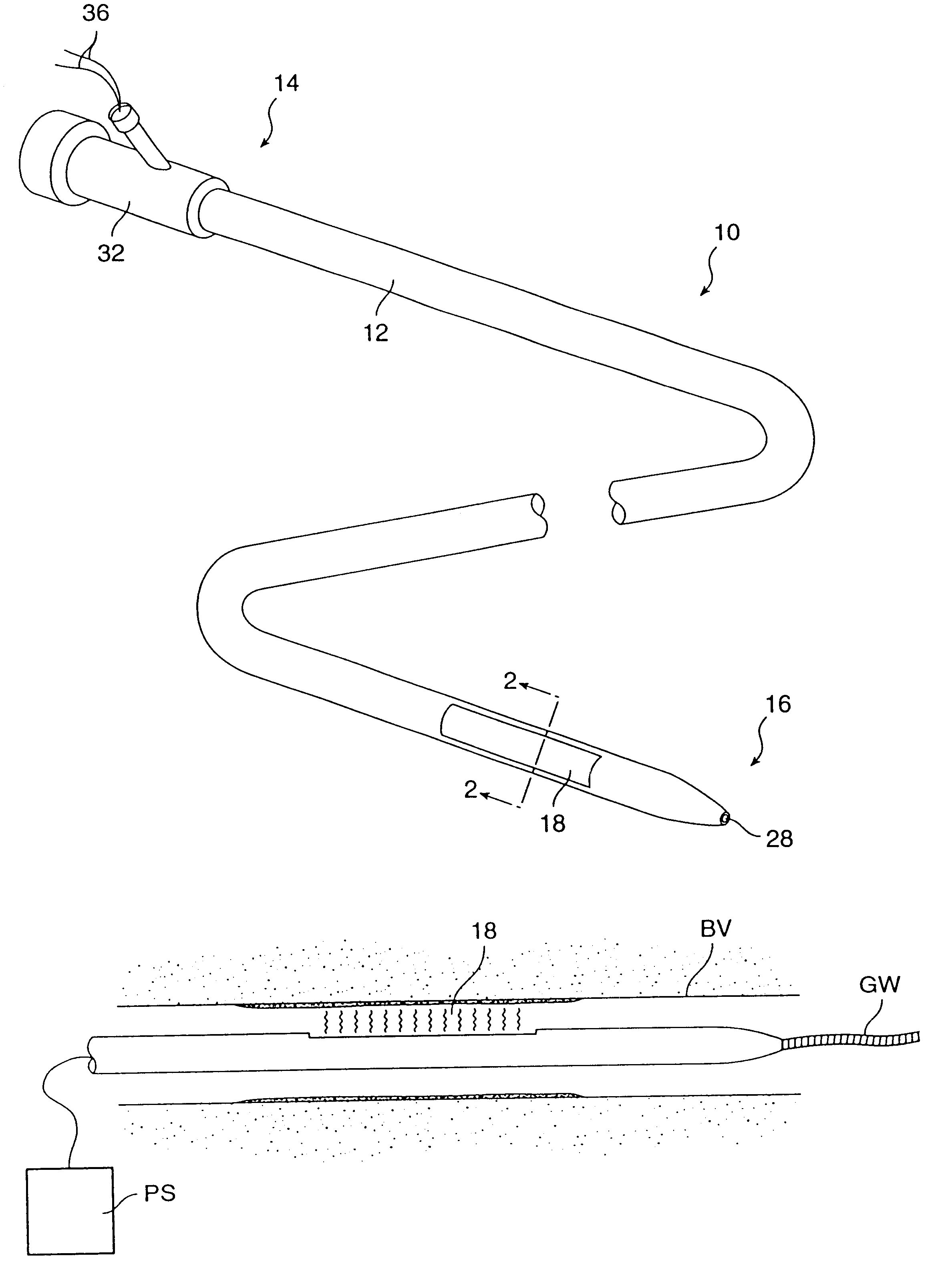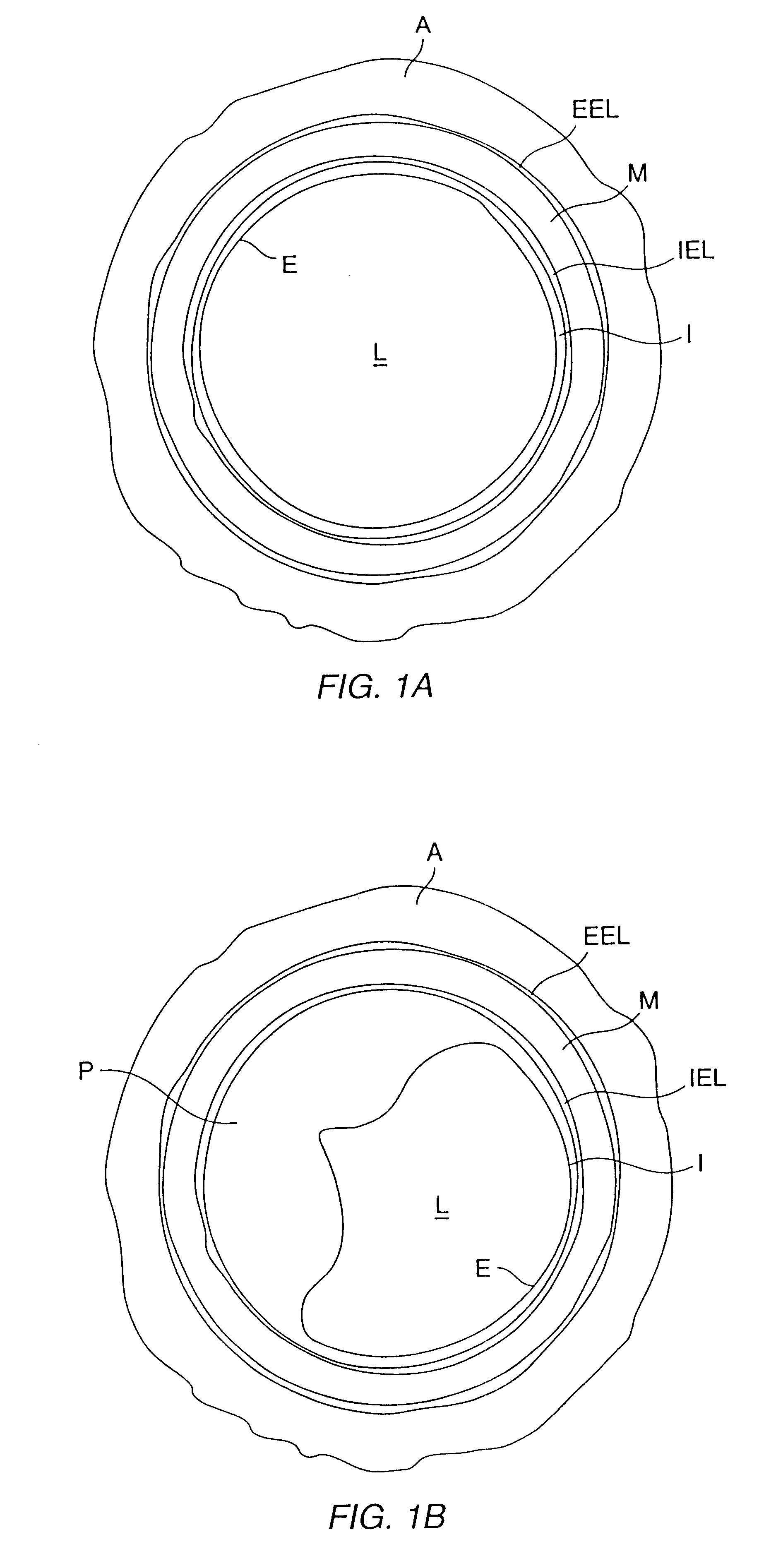Methods and systems for the inhibition of vascular hyperplasia
a hyperplasia inhibition and vascular hyperplasia technology, applied in the field of medical devices and methods, can solve the problems of hyperplasia inhibition relying on necrosis and the injury response, and present a substantial risk of injuring not only the neointimal layer, but also the medial layer and other arterial tissues and structures
- Summary
- Abstract
- Description
- Claims
- Application Information
AI Technical Summary
Benefits of technology
Problems solved by technology
Method used
Image
Examples
Embodiment Construction
FIG. 1A illustrates a cross-sectional view of a healthy artery, such as a coronary artery, an internal carotid artery, femoral artery, or other artery of the type which is subject to arteriosclerosis. The arterial structure comprises a number of lamina which surround the arterial lumen L, including the outermost adventitial layer A. Immediately inside of the adventitial layer is the external elastic lamina EEL which in turn surrounds the medial layer M. Inside of the medial layer is the internal elastic lamina IEL, and inside of the internal elastic lamina is the intimal layer I. The endothelial layer E lines the interior of the intimal layer, and the intimal layer and endothelial layer will normally be relatively thin in a healthy artery, as illustrated in FIG. 1A.
FIG. 1B illustrates an artery suffering from atherosclerosis, which is the most significant form of arteriolosclerosis. In the early stages of atherosclerosis, the arterial intimal layer thickens with deposits called athe...
PUM
 Login to View More
Login to View More Abstract
Description
Claims
Application Information
 Login to View More
Login to View More - R&D
- Intellectual Property
- Life Sciences
- Materials
- Tech Scout
- Unparalleled Data Quality
- Higher Quality Content
- 60% Fewer Hallucinations
Browse by: Latest US Patents, China's latest patents, Technical Efficacy Thesaurus, Application Domain, Technology Topic, Popular Technical Reports.
© 2025 PatSnap. All rights reserved.Legal|Privacy policy|Modern Slavery Act Transparency Statement|Sitemap|About US| Contact US: help@patsnap.com



